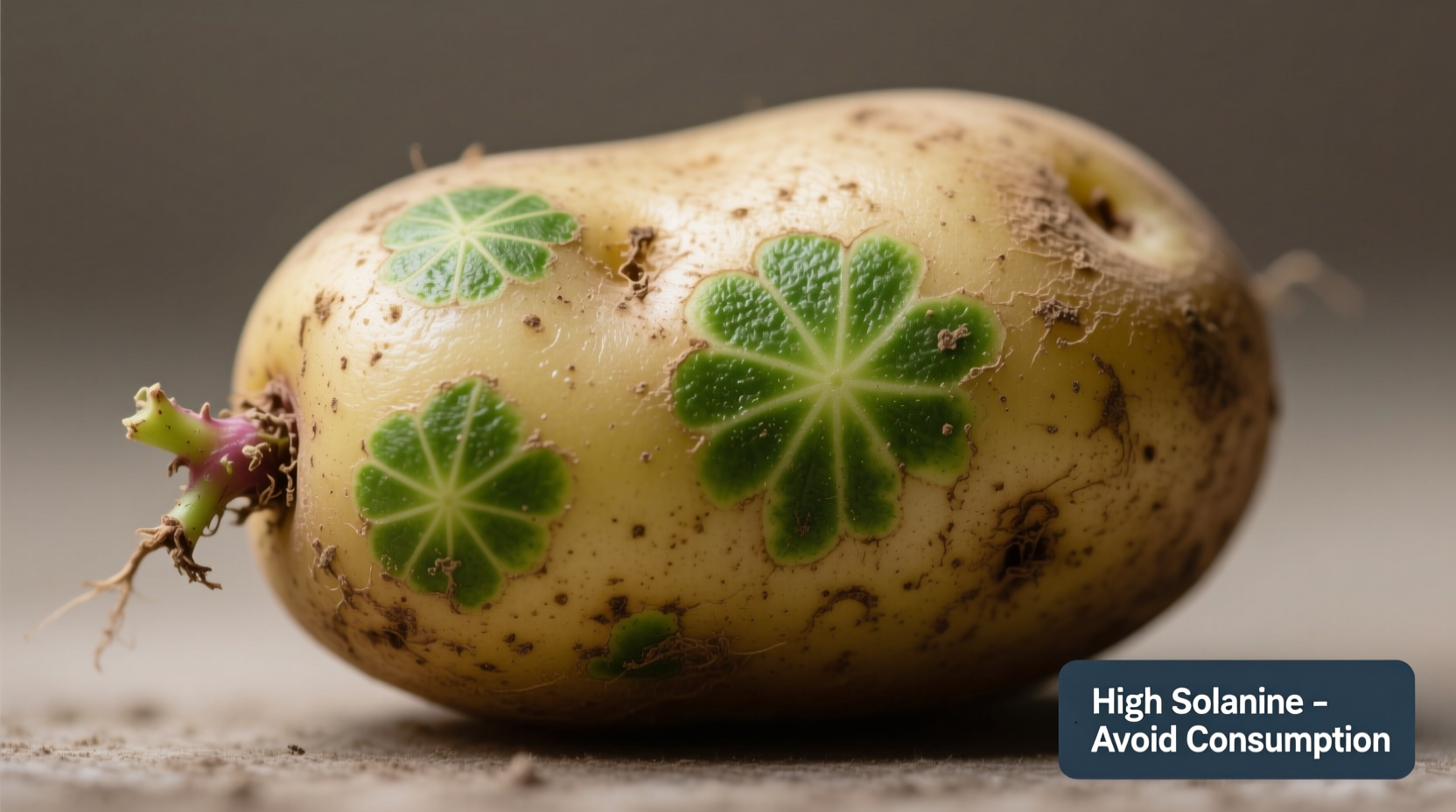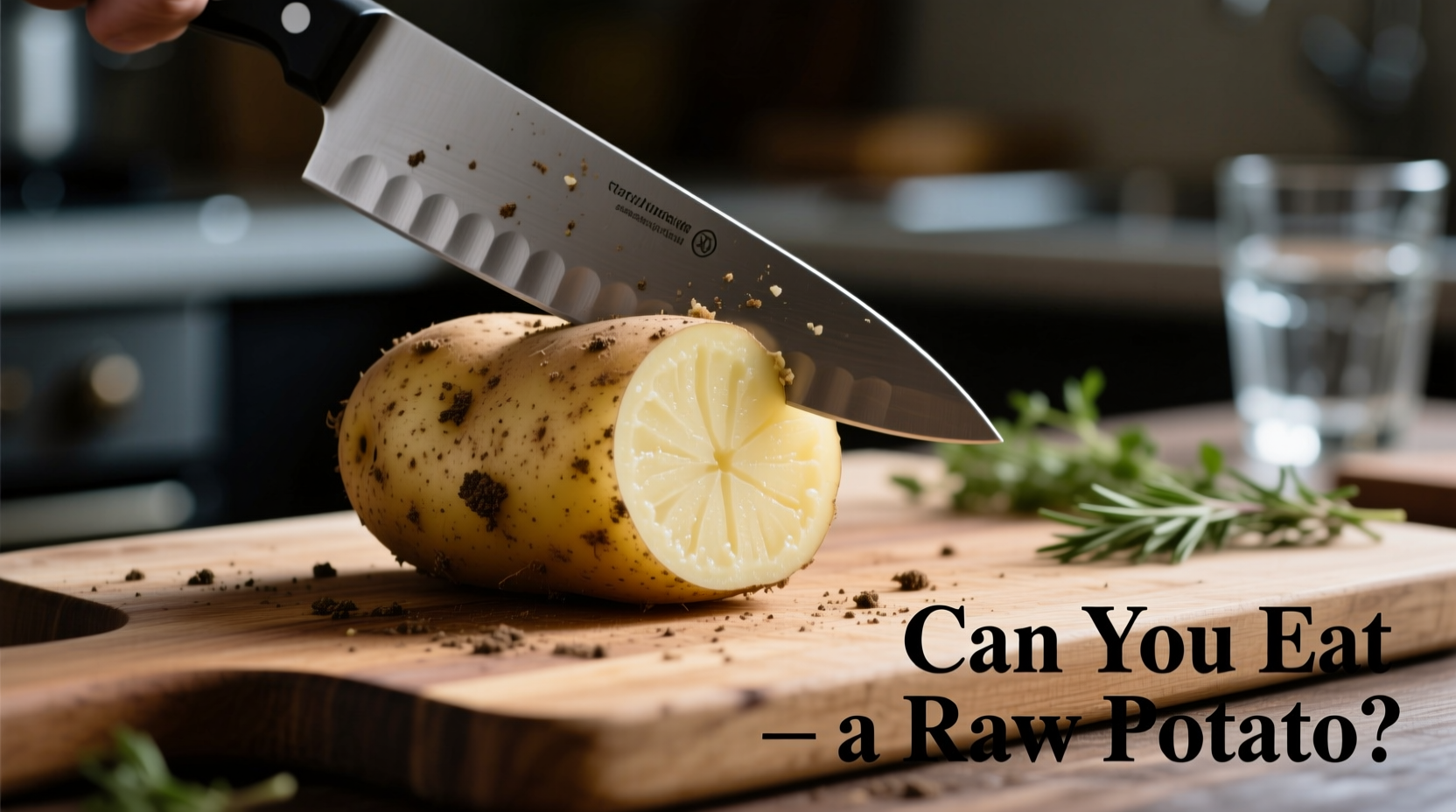The Hidden Dangers in Your Raw Potato
When you're tempted to snack on a raw potato straight from the bag, you're risking more than just an unpleasant taste. Raw potatoes contain naturally occurring compounds that can disrupt your digestive system and potentially cause food poisoning symptoms. Understanding these risks helps you make informed choices about potato preparation.
Why Solanine Makes Raw Potatoes Unsafe
Solanine, a natural toxin found in nightshade plants including potatoes, serves as the plant's defense mechanism against pests. This glycoalkaloid compound concentrates in the potato's skin and just beneath the surface. When potatoes are exposed to light, they produce chlorophyll (turning green) and significantly increase solanine production.
| Condition | Solanine Level (mg/100g) | Health Risk Level |
|---|---|---|
| Fresh, properly stored potato | 2-13 | Low (safe when cooked) |
| Greened potato areas | 20-250 | High (immediate risk) |
| Sprouted potato | 25-320 | Severe (avoid consumption) |
| Reported poisoning threshold | 20-25 | Symptoms begin |
According to the U.S. Food and Drug Administration, solanine levels above 20 mg per 100 grams can cause symptoms of poisoning. The Centers for Disease Control and Prevention notes that while severe solanine poisoning is rare in the United States, it does occur when people consume improperly stored or prepared potatoes.
Digestive Distress: More Than Just Solanine
Beyond solanine concerns, raw potatoes present another significant challenge to your digestive system. They contain high levels of resistant starch, which passes through your small intestine undigested. While some resistant starch can benefit gut health when consumed in moderation, raw potatoes contain excessive amounts that commonly cause:
- Severe bloating and gas production
- Abdominal cramps and discomfort
- Nausea and potential vomiting
- Diarrhea or irregular bowel movements
Cooking transforms the potato's starch structure, making it more digestible while reducing solanine levels. The heat breaks down the resistant starch into more easily digestible forms while partially degrading the solanine compounds.

Nutritional Reality: Raw vs. Cooked Potatoes
Some believe raw potatoes offer superior nutrition, but this misconception overlooks important food science principles. While cooking does reduce certain heat-sensitive nutrients like vitamin C, it simultaneously increases the bioavailability of others:
- Vitamin C: Raw potatoes contain more vitamin C, but cooking preserves enough to meet daily requirements
- Antioxidants: Cooking increases certain antioxidant compounds by breaking down cell walls
- Digestibility: Cooked potatoes provide more accessible energy and nutrients
- Mineral absorption: Heat treatment improves absorption of potassium and magnesium
The USDA FoodData Central database confirms that properly cooked potatoes maintain excellent nutritional profiles while eliminating the risks associated with raw consumption.
Recognizing Dangerous Potatoes: Warning Signs
Not all raw potatoes pose equal risks. Certain conditions dramatically increase solanine levels and make potatoes unsafe even when cooked. Watch for these danger signs:
- Green discoloration: Indicates chlorophyll production alongside elevated solanine
- Sprouting: Sprouts and the surrounding areas contain concentrated toxins
- Soft or wrinkled texture: Sign of age and potential spoilage
- Bitter taste: Immediate indicator of high solanine content
When you see green spots, remove at least 1/4 inch around and beneath the affected area. For extensive greening or sprouting, discard the entire potato. Proper storage in a cool, dark place with good ventilation significantly reduces solanine formation.
What to Do If You've Eaten Raw Potato
Accidentally consumed raw potato? Most healthy adults experience mild symptoms that resolve within 24 hours. Follow these steps:
- Stop eating the raw potato immediately
- Drink water to help flush your system
- Monitor for symptoms like nausea, headache, or stomach cramps
- Contact a healthcare provider if symptoms worsen or persist beyond 24 hours
- Seek immediate medical attention for severe symptoms including vomiting, fever, or difficulty breathing
Children, pregnant women, and individuals with compromised digestive systems face higher risks from raw potato consumption and should be monitored closely.
Safe Alternatives for Raw Potato Cravings
If you enjoy the crisp texture of raw potatoes, consider these safer alternatives:
- Partially cooked potatoes: Parboil for 5-7 minutes to reduce solanine while maintaining some firmness
- Yukon Gold varieties: Naturally lower solanine content than russet potatoes
- Potato salads with cooked potatoes: Chill cooked potatoes for a firmer texture
- Root vegetable alternatives: Jicama, celery root, or radishes provide similar crunch safely
Remember that proper cooking doesn't just make potatoes safer—it enhances their flavor and nutritional value. Baking, boiling, or steaming transforms potatoes into a nutritious, easily digestible food that's been a dietary staple worldwide for centuries.











 浙公网安备
33010002000092号
浙公网安备
33010002000092号 浙B2-20120091-4
浙B2-20120091-4